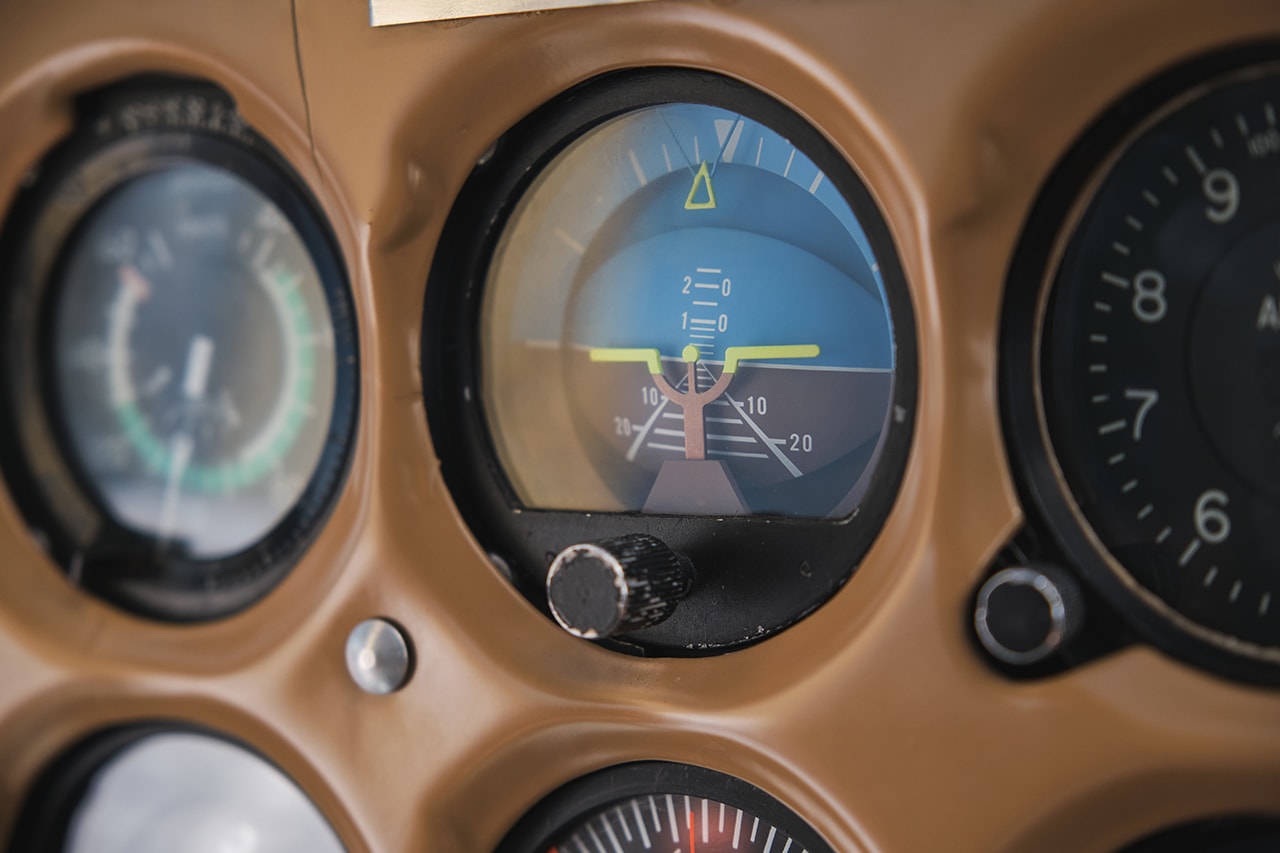How Does an Attitude Indicator Work? Explained Simply
Sep 26, 2024
What is an Attitude Indicator?
The attitude indicator is a must have for any pilot, it gives you vital information about the aircraft's orientation to the Earths horizon. This is especially useful in low visibility.
In the cockpit of an aircraft the attitude indicator is a gyroscopic flight instrument. Its main function is to show the aircraft's attitude by rotating about the longitudinal and lateral axes.
If you're learning how to read the attitude indicator, you'll notice that it is centrally located on the instrument panel, playing a crucial role for pilots by illustrating both pitch and bank information essential for maintaining proper flight orientation.
Unlike a traditional attitude indicator which may use older mechanical systems, modern ones in larger commercial aircraft use more advanced technology for better accuracy.
When it comes to the longitudinal axis the attitude indicator shows the degree of bank. This means it tells the pilot how much the wings are tilted left or right, which is important for balance and control.
For the horizontal axis, the instrument shows pitch. This is the aircraft's nose position—up, level or down. Understanding pitch is important for climbing, descending or flying level.
By giving you this information the attitude indicator ensures you stay oriented, safe and reliable in all flight conditions. So, it’s a must have for both experienced pilots and newbies.
Historical Development of Attitude Indicators
The attitude indicator, often referred to as the artificial horizon, has a fascinating history that dates back to the early days of aviation.
The first attitude indicators emerged in the 1920s, leveraging the principle of a spinning gyroscope to provide pilots with crucial orientation information.
These early devices were mechanical and relied on a vacuum system to power the gyroscope, ensuring it maintained a stable reference point.
As aviation technology advanced, so did the design and functionality of attitude indicators. The transition from purely mechanical systems to electric and eventually solid-state indicators marked significant milestones in their development.
Modern attitude indicators now incorporate advanced technologies, such as the Attitude Heading Reference System (AHRS), offering enhanced reliability and performance.
Today, the attitude indicator remains an indispensable instrument in the cockpit, providing pilots with vital information about the aircraft’s attitude and orientation relative to the horizon.
This evolution from the early mechanical gyroscopes to sophisticated electronic systems underscores the continuous innovation in aviation safety and navigation.
How Attitude Indicators Work
Attitude indicators are essential aviation instruments that help pilots understand their aircraft’s orientation relative to the earth’s horizon. They do this by mimicking the relationship between the actual aircraft and the horizon using a miniature aircraft and horizon bar.
A modern version of this instrument is the Digital Attitude Indicator, which enhances accuracy and ease of reading.
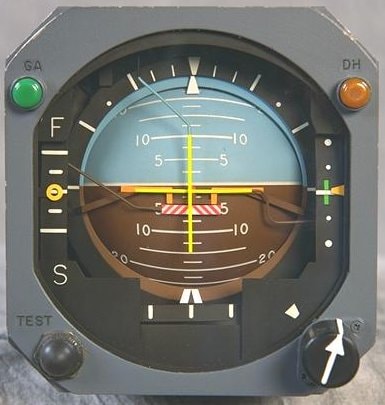
The key feature of these devices is the gimballing system. This allows the miniature aircraft to rotate freely, representing the real aircraft’s pitch and roll attitudes. When the aircraft pitches up or down, the indicator tilts accordingly. The same happens with rolling movements to the left or right.
A critical component inside the attitude indicator is the gyroscope. This device spins at high speeds, maintaining its position due to the principles of rigidity in space. As long as the gyroscope keeps spinning, it provides a stable reference point.
To keep the gyroscope spinning, attitude indicators rely on a vacuum system. This system ensures a steady airflow is directed to the gyroscope, maintaining its constant rotation and stability. The aircraft engine facilitates this airflow, powering the gyroscope and impacting the instrument's performance and accuracy in various flight conditions.
The gyroscope's vertical spin axis allows the instrument to effectively measure and display both pitch and roll attitudes in real-time. In summary, by combining a gyroscope, a gimballing system, and a reliable vacuum system, attitude indicators give pilots accurate and timely information about their aircraft’s orientation. This helps ensure safe and controlled flight operations in various conditions.
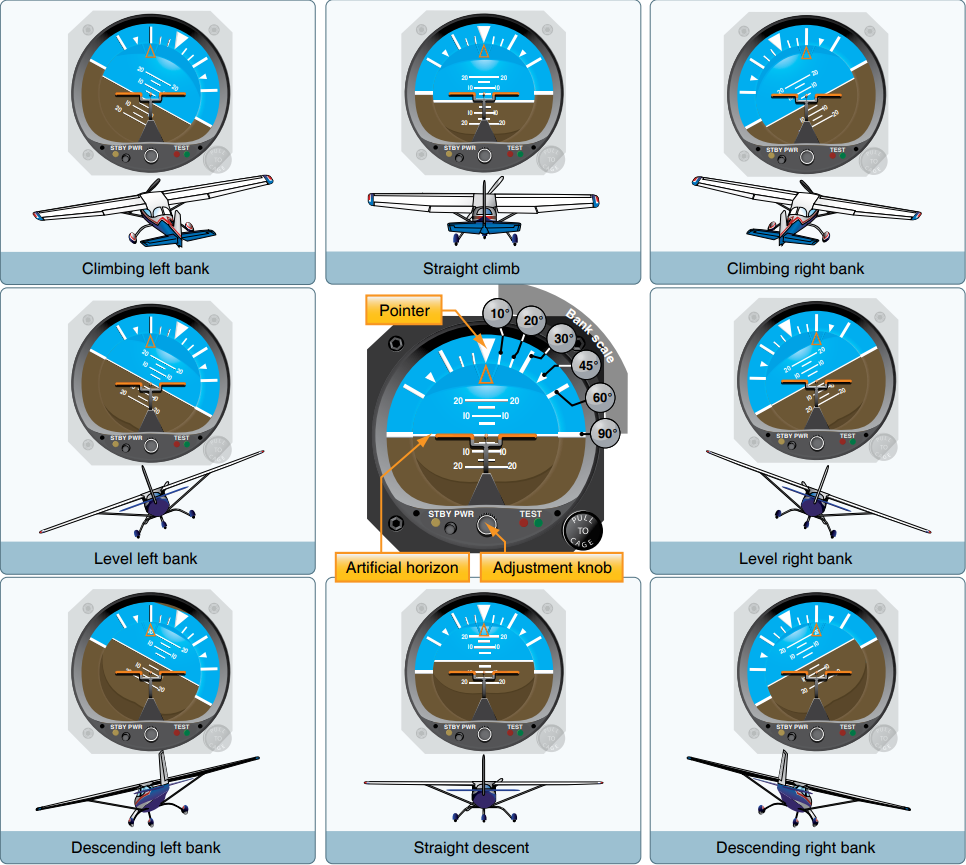
Reading and Interpreting Attitude Indicators
The attitude indicator provides pilots with a quick and clear snapshot of both the pitch (up and down) and bank (left and right) attitudes of their aircraft in a single glance.
This helps maintain control and situational awareness, especially in challenging conditions.
On the gauge, there’s a pictorial representation of an aircraft set against the sky and land, with an artificial horizon line distinguishing between them. This visual presentation makes it easier for pilots to understand their current orientation.
Reference lines indicate the degree of pitch, either up or down, relative to the horizon, clarifying the functionality of the attitude indicator in aiding pilots to understand aircraft orientation and maintain flight stability.
Various hash marks, pointers, arrows, and lines are also present on the face of the gauge. These elements guide the pilot in assessing the degree of pitch or bank accurately, facilitating precise maneuvering.
The miniature aircraft on the gauge moves in real-time, rolling left or right with the bank and moving vertically up or down with the pitch relative to the artificial horizon, thus providing continuous, intuitive feedback on the aircraft’s attitude.
Types of Flight Director Attitude Indicators
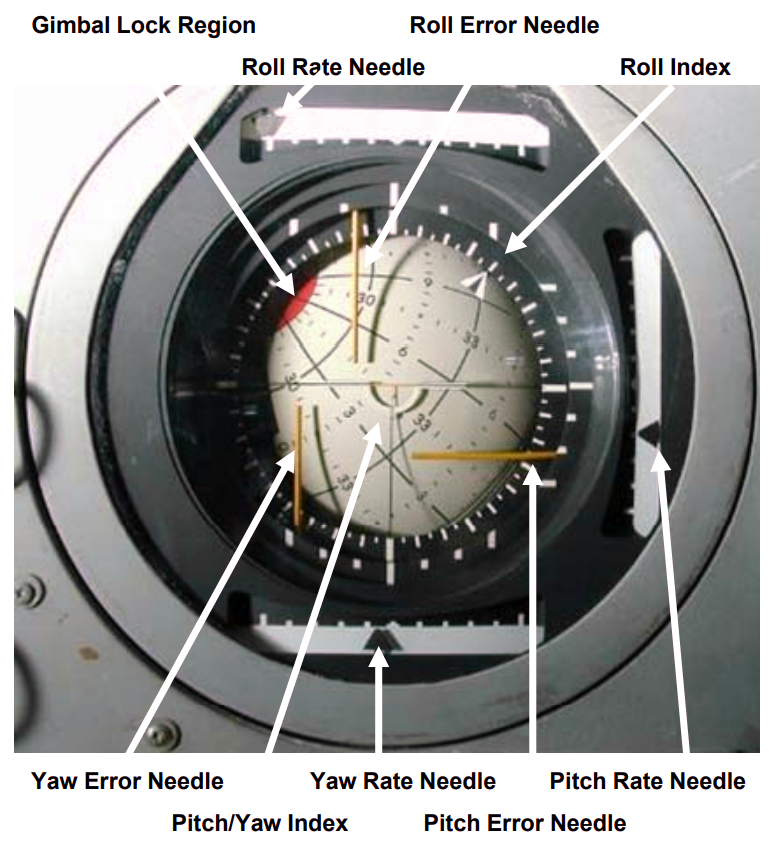
Importance of Attitude Indicators in Aviation Safety
Attitude indicators are pivotal to aviation safety, especially when flying in instrument meteorological conditions (IMC). These instruments provide pilots with a quick and accurate snapshot of the aircraft’s attitude, enabling them to maintain straight and level flight even when visibility is compromised.
During critical phases of flight, such as takeoff and landing, the pilot’s workload is significantly high, and the risk of spatial disorientation increases.
The attitude indicator helps mitigate this risk by offering real-time feedback on the aircraft’s orientation, allowing pilots to detect and correct any deviations from the desired flight path promptly.
Moreover, modern attitude indicators are often integrated with other flight instruments, such as primary flight displays (PFDs), to provide a comprehensive view of the aircraft’s flight dynamics.
This integration enhances situational awareness and contributes to safer flight operations.
In summary, the attitude indicator is not just a tool but a lifeline in aviation, ensuring that pilots can navigate safely and effectively, regardless of the external conditions.
Attitude Indicators
Traditional attitude indicators use an internal gyroscope powered by the aircraft’s vacuum system. This gives the pilot situational awareness and a clear display of pitch and bank.
Flight Director Attitude Indicators (FDAI) are for crewed spacecraft. These fancy instruments show the spacecraft’s yaw, pitch, roll and orbit against a fixed-space inertial reference frame. Which is essential for space missions.
Solid state attitude indicators are the latest technology. They use systems like the Attitude Heading Reference System (AHRS) or the Air Data, Attitude and Heading Reference System (ADAHRS) to give you attitude information and are more reliable and better performing.
Knowing the different types of attitude indicators is important for pilots and astronauts. Each one gives you the information you need to fly or operate your aircraft or spacecraft safely and accurately no matter the environment.
Being informed about these instruments helps aviators and space travelers alike to fly and navigate with confidence and precision and have successful missions and safe journeys.
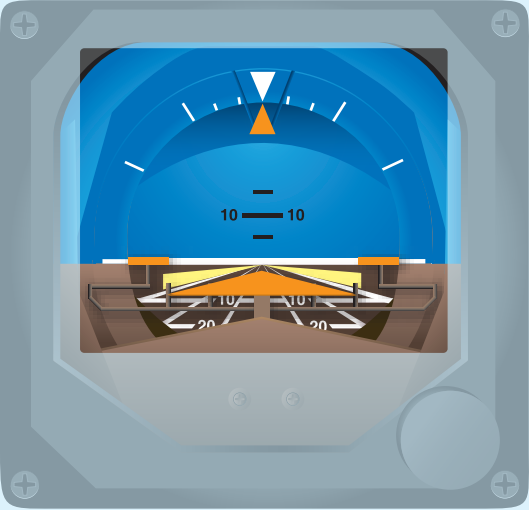
Limitations and Maintenance of the Vacuum System
Attitude indicators are generally good but have some minor flaws. The good news is most of these flaws are fixable so pilots can maintain awareness.
Some attitude indicators have an adjustment knob. Pilots can use this knob to move the little plane on the display to match their perspective. This helps to keep it accurate.
Older attitude indicators had limitations with pitch and bank angles. They could only show pitch up to 60 degrees and bank up to 100 degrees. If these limits were exceeded, the instrument could "tumble", meaning the gyro would flip over inside the case. In many cases, this would render the instrument unusable. This limited their usefulness in some situations.
To avoid this problem, aircraft that frequently exceeded the airspeed indicator's bank and roll limitations had a knob that would "cage" the instrument. This would hold the gyro in place so that it couldn't tumble. When the pilot was finished with the extreme maneuvers, they could push the know back in to uncage the AI.
Newer ones have also fixed these limitations. Vacuum driven attitude indicators now have more pitch and bank limits so they’re more useful and reliable for all flying situations.
In summary, knowing the pros and cons of attitude indicators is key. Proper maintenance and checks will keep these instruments providing accurate life saving info for pilots and astronauts.

Modern Attitude Indicator Systems
Modern glass cockpit aircraft use solid state accelerometers to determine the aircraft’s attitude. These accelerometers often work with a magnetometer to give the pilot a reliable sense of orientation.
In transport category aircraft a laser ring gyro may be used to determine the aircraft’s attitude. This is very precise and reliable for larger and more complex aircraft.
Attitude Heading Reference System (AHRS) go one step further by providing 3 axis information through ring laser gyroscopes. This gives data on pitch, roll and yaw so you have a complete picture of the aircraft’s orientation.
AHRS can also share its data with multiple devices on the aircraft. Primary flight displays (PFDs) can tap into this information so all instruments are up to date and in sync.
These attitude indicators make flying safer and more reliable. By understanding and using these modern technologies you can stay more aware and more confident in your aircraft.

Conclusion
The attitude indicator is a crucial tool for flying in challenging weather conditions. It helps pilots keep the aircraft stable and oriented correctly.
This instrument is key to safe flight, as it ensures that the aircraft maintains straight and level flight. Pilots rely on it to avoid disorientation and maintain control.
It's important for every pilot to understand how the attitude indicator works. This knowledge is fundamental for effective flight navigation.
Regular maintenance of the attitude indicator is essential. It ensures that the instrument provides accurate and reliable readings at all times.
By mastering and caring for the attitude indicator, pilots can fly with greater confidence and safety, even in adverse conditions.
